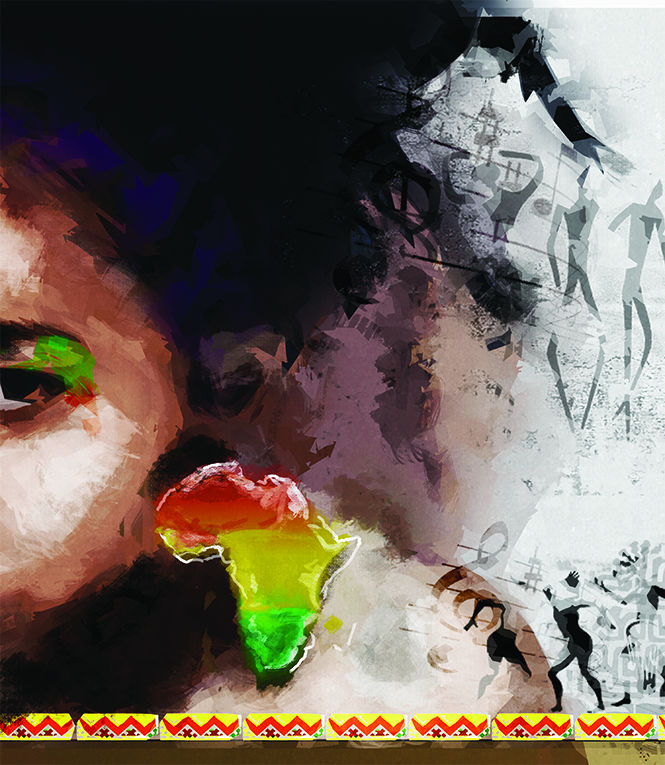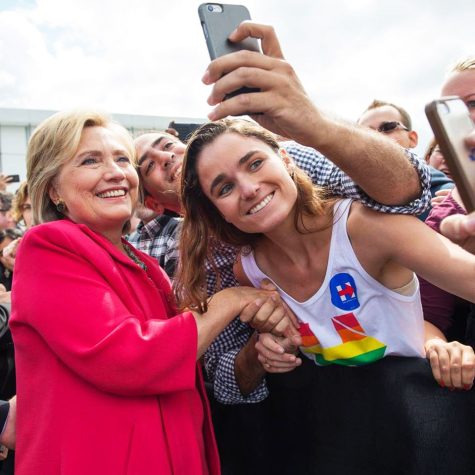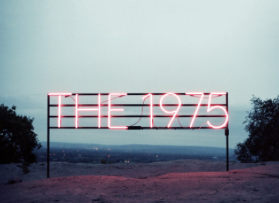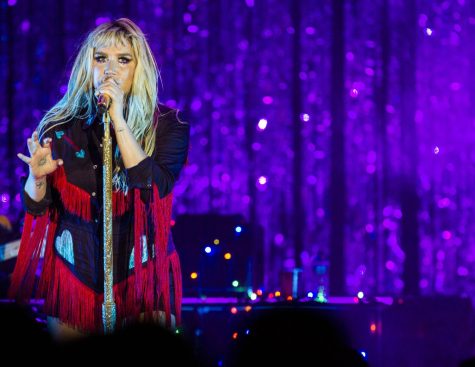Black influence in pop culture
February 3, 2015
Imagine yourself in a meeting with your boss and several coworkers, where you all are bouncing ideas off one another to find a solution for a specific problem in the company. You stay quiet and think up ideas on your own, while the very loud and obnoxious coworker sitting next to you yells out every idea that comes to mind, but none of them work. Now imagine, in the privacy of your office, you are speaking to another coworker about an idea that you think would be the best solution for the company. Your obnoxious coworker eavesdrops outside your door, and when you’ve finished explaining your idea, runs and tells your boss the amazing idea, claiming it as his or her own. That coworker is promoted to an executive position for the company because your idea worked so well, but you haven’t gotten any credit for it and he or she feels no remorse.
How would you feel?
This same thing has happened to African-Americans for generations. New trends in music, fashion, dancing and even body shapes have been heavily influenced by the African-American community, but the credit has not been given to the originators.
Music
While watching the 2014 Grammy awards, many predicted that hip-hop artist Kendrick Lamar would win Best Rap Album but were shocked when white rapper Macklemore won. Hip-hop enthusiasts considered it a slap in the face to the black community that started this music genre when a white man who rapped about a thrift shop won over one of the most critically acclaimed albums in recent years.
Eugene Shelton, associate professor in the School of Journalism and Mass Communication, said that it is nothing to be upset over and that Macklemore won because there is “power in numbers.”
“It’s just a matter of economics,” he said. “There are more white people than black people. There are young consumers who no longer associate this music with African-Americans because it’s coming to them from a white artist. It’s not to say Macklemore is better than Kendrick, but he’s exposed to a much larger crowd to sell more records.”
Shelton said the same thing happened in the 1950s with Elvis Presley and rock ‘n’ roll. He said Sam Phillips, the founder of Sun Records, loved the sound of black music but knew that it wouldn’t sell to white audiences. To compromise, he found a white man with a black sound, and thus the “King of Rock ‘n’ Roll” was born.
“I would say Eminem is the Elvis of hip-hop because he is the highest- selling rap artist among thousands of black rappers,” he said. “And before him it was Vanilla Ice who had the most successful hip-hop record with ‘Ice, Ice Baby.’ It’s all in the numbers.”
Mwatabu Okantah, a Pan-African Studies associate professor, agreed with Shelton that blacks have been copied for generations and added that some of today’s white artists wouldn’t be as successful without help from black artists.
“Without Dr. Dre, there could be no Eminem,” he said. “Without Usher, there could be no Justin Bieber. ‘Nsync, the Backstreet Boys and Britney Spears all owe their musical roots to African American R&B and Soul icons.”
English associate lecturer Linda Piccirillo-Smith is an Italian-American woman, who although considered a white woman, was raised to believe that Italians didn’t associate themselves as part of that larger white community.
“Internally, I feel a separation with the white community who aren’t Italian, so I can stand back and really see everything for what it is in America,” she said. “I resent the fact that African-Americans, in general, tend not to be as often acknowledged for accomplishments, or it seems an exception rather than the rule.”
She said that it frustrated her to see Macklemore getting all the credit for what someone else started.
“It’s crazy because you’re sitting there watching the Grammys like ‘How is this happening?’ and ‘Why are these people not acknowledged, but these others are?’” she said.
Dancing
During the 2013 MTV Video Music Awards, pop star Miley Cyrus wowed fans and shocked others when she stepped on the stage and supposedly started the “new” dance craze, twerking.
Except, the dance isn’t new. Entertainers like Beyoncé and Rihanna have been dancing in the same fashion since the beginning of their careers, but it wasn’t until Cyrus did it that it became mainstream.
Shelton said because she had the eye of white America, which is a bigger audience, Cyrus had more power to influence people who never paid attention to twerking before.
“Perhaps they didn’t understand it when Beyoncé did it, but when Miley does it, she makes it acceptable for everyone to do,” he said. “It was too black when Beyoncé did it. Now it can be a white thing.”
He added that in most trends, dancing included, mainstream America needs a white person to open the door and say, “You can do it now…You can be a rapper, you can dance, you can do whatever you want because this white image that we see, makes it acceptable. And, as I said before, there’s power in numbers,” he said.
Piccirillo-Smith said that Cyrus represented this “thing” and was trying to market herself in a new way, and to do that, she stole what she thought would get her the most attention. She said that Cyrus was disrespectful to the community that had developed this style of dance and tried to make it hers in the most exaggerated way.
Fashion
In October, Elle Magazine called Timberland boots the new Birkenstocks, overlooking the fact that the boots were a winter-staple for the black community in the 1990s. Besides the boots, cornrows and do-rags (head caps) have made their way into high fashion. Do-rags have even been renamed “Urban Tie Caps” as a way to make them seem more high fashion. These trends have been passed down for generations but have just recently caught the eye of fashion experts.
“When looking at the fashion industry as a whole, the majority of people who control the industry are still white,” Piccirillo-Smith said. I don’t know how many people within that industry would have been paying attention to a marginal market, the African-American market.”
She said that when looking for something different, fashion experts saw how these trends worked in a certain community for years and adapted them to see if another community would buy into them the same way. In other words, they saw a trend, used it as their own and took all the credit and mainstream money.
Christina McVay, a senior lecturer in Pan-African Studies and English who is also a white woman, said that white people are a little slow on the uptake and probably didn’t even know some of these things were going on in the black community.
“It sometimes takes us a while to catch on to new trends,” she said. “It’s just like the use of slang. African-Americans started using certain slang terms years back, and you’re just recently hearing older white women using that same language. Years ago, you would never hear an older white person saying ‘chill’ or ‘cool.’ Now they do, and that’s because of the black community.”
Body Shape
There was a time when having a big behind was considered vulgar and overly sexual to women who were not part of the African-American community.
Now, celebrities like Kim Kardashian, Jennifer Lopez and Iggy Azalea have introduced this “new” world of curves. Singer Meghan Trainor’s “All About that Bass” idolizes women with curvier shapes, even saying “I’m bringing booty back.”
Where did it go in the first place?
Piccirillo-Smith said Italian women tend to have thicker hips and thighs, but it was never acceptable, and they couldn’t be thin enough when she was growing up.
“By finally getting to the point where having a different type of body shape is accepted as attractive is a benefit because it’s like finally people think it’s a good thing,” she said. “Then on the other hand, why did it take so long to be accepted when people have been shaped like this for so long?”
Shelton said even though black women have always celebrated having a curvier body, it was something that was always objectified by other races.
“It was viewed as something that wasn’t a part of the white standard of beauty,” he said. “You wouldn’t see Ms. America with a big butt, but when Kim Kardashian and Jennifer Lopez glamorized something that has already been done, they said, ‘It’s OK, white woman, you can have this shape.’”
With diverse cultures in America, some wonder why African-American trends have been copied so often. McVay has a simple answer.
“I think blacks are the biggest trend setters in America,” she said. “All throughout history, they have been imitated by people who felt themselves superior to blacks.”
Some may also wonder, with the influence of the African-American community in pop culture, why black culture is so popular, but black people aren’t.
“A lot of these issues have to do with the complexity of race in this country,” Piccirillo-Smith said.
She said there is a lack of acknowledgement that white people won’t admit that they really want to be like black people but think that it’s a bad thing. So, they take things from the black community to make it their own, therefore making it acceptable.
Shelton said it all goes back to the fact that a dominant culture will take whatever it wants from a smaller culture and have one of its own glamorize and showcase it.
“Imitation is the greatest form of flattery,” Shelton said. “But the problem is that there are so many people who are naive enough to think this was originated or introduced by them.”
Okantah said rather than concerning themselves about who is or isn’t giving them credit, or how others see them, African-Americans need to worry about how they see themselves.
“Blacks need to realize that everyone is studying them, but they aren’t interested in studying themselves,” he said. “I would like the black community to realize that their imitators see beauty in them that they don’t even see in themselves.”
Contact Ashlyne Wilson at [email protected].
























